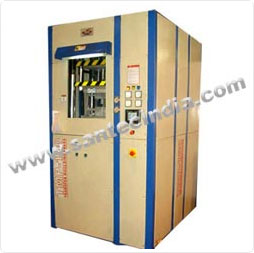


Transfer & Injection Moulding Presses
Plastic Injection Moulding Machine
Laboratory 2 Roll Mixing Mills
Laboratory Type Compression Moulding Press
Hydraulic Auto Feeding Cutting Machines
Hydraulic Powder Compacting Press
Scrap Balers / Scrap Baling Presses
Hardboard Cutting / Trimming Presses
Hydraulic Trimming Presses For Hot Forging
Fully Automatic Urea - Melamine Powder Molding Presses With Feeder
![]()
Home » About Us » Products, Processes & Services » Application of Machines » Transfer & Injection Moulding Presses » Articles & Resources
|
|
|||
 Today,
combination of injection molding press and twin-screw compounding extruder
represents new paradigm for processors, creating their own material whole
they mold them. Though these machinery systems are expensive, these are able
to successfully provide :
Today,
combination of injection molding press and twin-screw compounding extruder
represents new paradigm for processors, creating their own material whole
they mold them. Though these machinery systems are expensive, these are able
to successfully provide :
Home | About Us | Product Range | Santec Team | Why Choose Santec | Quality | Our Clients | FAQ's | Factory Tour | Site Map | Media Gallery | Contact Us | Send Enquiry